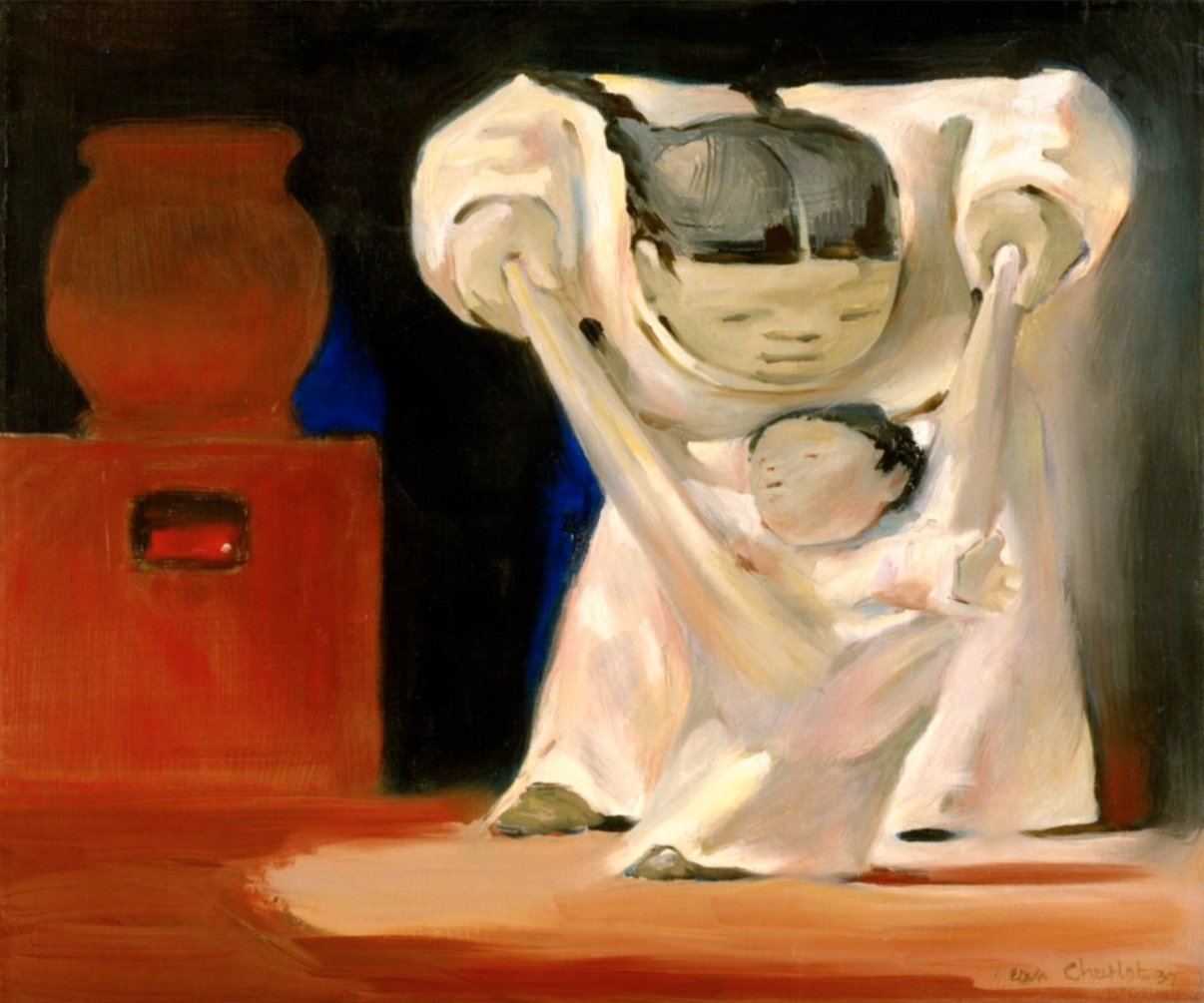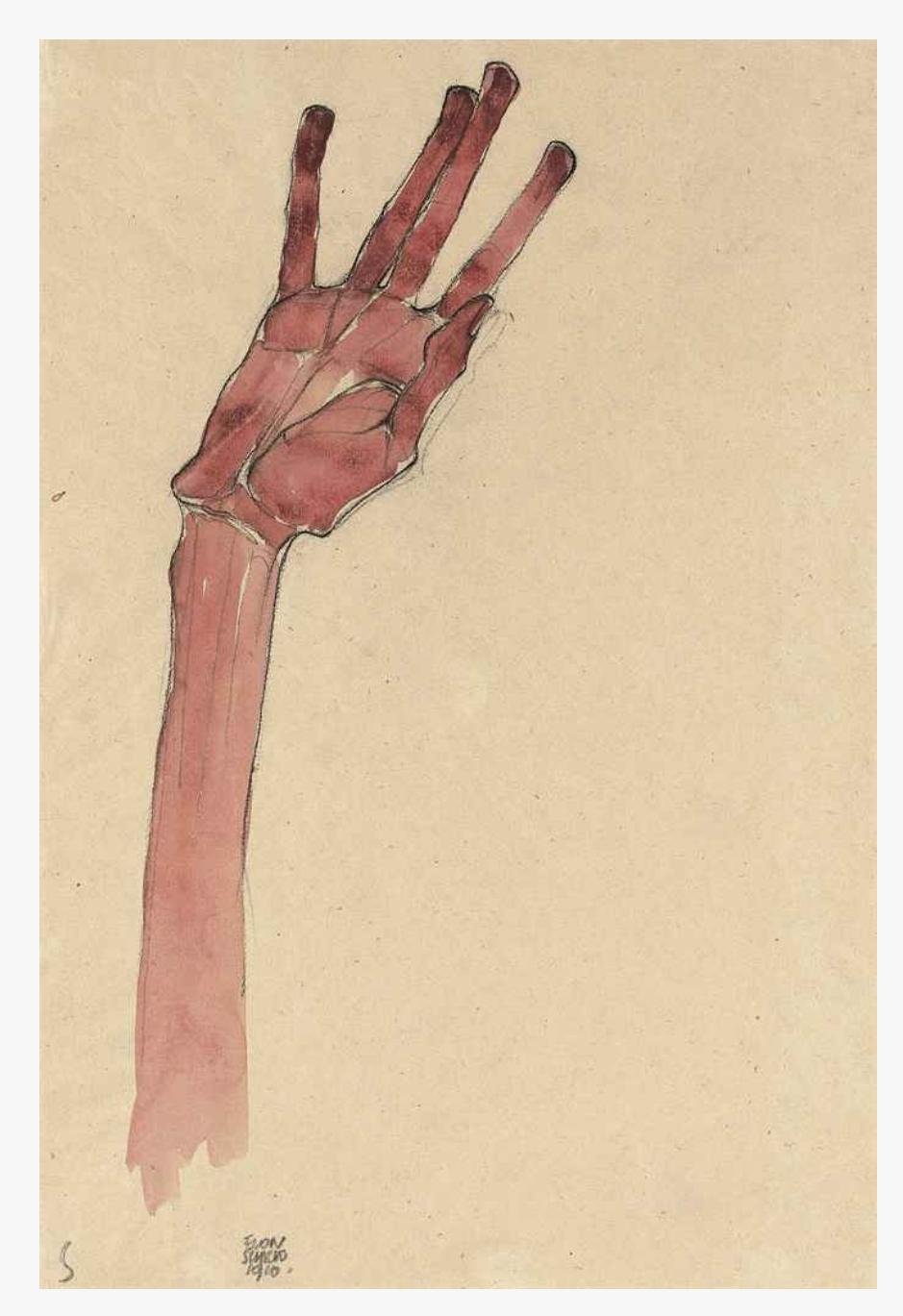20. Baby Steps & Breakthroughs
Show Notes
Big 3 Ideas from this episode:
What is the smallest step you’ve taken in your art that made the most impact?
What is the largest leap you’ve taken that made a difference?
How are baby steps different than breakthroughs?
(Or are they? … Mwwaaaaah!)
Marguerite Gerard, 17th Century, First Steps
Frank Auerbach on painting:
…“first … you attempt to do something of a comparable scale and standard (of historical art), which is impossible; second … you try and do something that has never been done before, that is also impossible.
So in the face of this you can either just chuck it in, or you can spend all your energy and time and hopes in trying to cope with it.
You will fail.
But as Beckett very kindly said for all of us, ‘try again, fail better’, and painting just took me over. I started off as a superficial person who was attracted to the arts willy-nilly. The more I realised how difficult it was, the more I knew that it was a challenge, that I would feel I had wasted my life if I didn’t try to grapple with it.”
Frank Auerbach: Speaking and Painting by Catherine Lampert is published by Thames & Hudson on 25 May, priced £19.95. The exhibition will be at Tate Britain, London, SW1P from 9 October. tate.org.uk.
References:
Abstract Artists: https://www.youtube.com/watch?v=Igb65wjKJtg&t=17s
Baby Steps! Scene from What About Bob with Bill Murray: https://www.youtube.com/watch?v=Yl6s6DGapug
I’m SAILING! Scene from What About Bob with Bill Murray: https://www.youtube.com/watch?v=YrbY4hsNh64
McSweeney’s : https://www.mcsweeneys.net/articles/baby-steps-the-early-work-of-famous-artists
-
Episode 20: Baby Steps and Breakthroughs
===
[00:00:00] The metaphor mindset is a podcast for artists and creative thinkers, entrepreneurs and leaders who want to explore ideas around creativity and commerce.
[00:00:21] And this is episode 20, Baby Steps and Breakthroughs.
[00:00:27] Do you want to come sailing with me and my friend George's boat.
[00:00:35] No, I'd love to, uh, Sounds great. I I've never been on a boat and I don't think I can handle it. It just makes my lips numb to think about it. But if your friend is a good sailor and the craft is, seaworthy yes, I will go sailing. I sail. I'm a sailor. I sail. Is this a breakthrough? That I'm a saior. I sail. I sail now. Keep sailing, Bob. Out on a boat on the lake. Way, far away from the dock. But the end of the window with the sky and everything Ahoy!.
[00:01:18] That's Bill Murray in What about Bob? Today I wanna talk about baby steps and breakthroughs.
[00:01:25] You might have heard the quote attributed to Picasso. It took me four years to learn to paint like Raphael and a lifetime to learn to paint like a child.
[00:01:34] I want you to think about baby steps and breakthroughs backwards.
[00:01:38] We often think about learning to draw or learning to paint as a process of slowly gaining more skill, and we think of breakthrough as something that happens very quickly. , but if you reverse those, it also makes sense.
[00:01:52] A baby step by definition is a tentative act or measure, which is the first stage in a long or challenging process. You build skill through taking one step at a time.
[00:02:03] A breakthrough, on the other hand, is a sudden, dramatic and important discovery or development.
[00:02:09] But often as you take baby steps, say just having a drawing practice every day in your sketchbook, you actually make quite quick progress if you just stick to it. So there's kind of an inevitability to the idea of baby steps. you will get there. If you just stick to it, you know what the goal is. You know where you're going. Whereas a breakthrough may be much more ambiguous. It's a result of exploration, experimentation, and sometimes. We don't even know what we're looking for or what we want to happen. We just know that there's something new out there and we have to trust the process of moving forward slowly and putting in the work.
[00:02:48] And we trust that it will result in some sort of important change that will shift everything.
[00:03:00] By the time William de Kooning was in his early teens, he was incredibly skilled in drawing. He may have been naturally gifted, but also he worked very hard on learning how to render the world around him in an almost photographic perfection. One drawing of a still life he worked on for two years.
[00:03:18] It is a marvel to see, De Kooning had those skills very young, but why didn't he just continue to paint that way? He spent the rest of his life not working towards skill, but working towards breakthrough.
[00:03:33] Today I wanna talk about the difference between skill and breakthrough. We take baby steps towards a skill. We learn to draw an outline. We learn to see shadows. We learn to measure. We learn about contrast and value and color composition, and all of these elements of creativity, of design, of painting. Of artistic representation,
[00:03:56] but someone can be a very skilled artist in many different areas, but they may not have a personal breakthrough. This is where the imagination comes in. I've heard the quote, you can only ever create to the edge of your self-concept. I agree with this and I disagree. I agree because like Bill Murray and What about Bob?
[00:04:21] He saw himself as a fearful person, and so he was always holding himself back. His self-concept was a tight cage around him,
[00:04:29] and he often didn't do things because of fear, but also. Bob in his imagination wanted to be adventurous. when the opportunity arose, he went sailing and even though he was actually tied to the mast and other people were actually sailing the boat, in Bob's mind, he was sailing. It was a breakthrough. So the next time he will probably have to go back to the baby steps of actually learning how to haul a jib or to read a compass.
[00:04:56] But he's already had that breakthrough. This is what the imagination is for.
[00:05:00] For me, it's like the difference between objective or representational art and non-objective or abstract art. that's not based on or drawn from the forms of nature. There's an artist in Scotland, Fred Ingram, He says, his paintings are not of nature. are about nature. And this is now my mantra as I venture into learning to paint more abstractly. It's a lot harder than it seems. My paintings are not of the beach. They are about the beach. Both Picasso and De Kooning and many other abstract painters like Joan Mitchell and Helen Franken also worked in this process of breakthrough. They had skills they could paint and render, but what they were looking for was something different. Helen Frankenthaler said, there are no rules. That is how art is born, how breakthroughs happen, go against the rules or ignore the rules. That is what invention is all about.
[00:05:58] So when you take [00:06:00] baby steps, Towards drawing or painting from life with objects to look at and observe and render. The baby steps are clear. You get better, you get more skilled. And of course we have moments of breakthrough throughout that process. But as you venture into other unknown areas, say abstract art, Where you're looking not only at forms or objects, but at something else that's a little harder to connect with, like color or a spiritual concept or light.
[00:06:32] The goals and rules are much less clear and you must listen to yourself.
[00:06:36] As Kandinsky says, it comes from inner necessity. So in order to understand when you get there, you need to be in tune to what a breakthrough is for you.
[00:06:48] And sometimes you go back and forth between baby steps where you're learning a skill and taking slow
[00:06:55] steps through. A challenging process of learning something and then you go back into breakthrough. So to me, it's always this idea of being open to both baby steps and breakthrough.
[00:07:10] Frankenthaler said when I am in pursuit of a place to go from where I am, I often go back to nature, the figure or still life in order to trigger a leap into the unknown.
[00:07:22] Different artists have so many different ways of getting there. For Louise Bourgeois, her childhood was a source of continued inspiration. She said, my childhood has never lost its magic. It has never lost its mystery and it has never lost its drama. all my work of the last 50 years, all my subjects have found their inspiration in my childhood.
[00:07:49] And you may not even really understand that when you look at her work, but this is how she gets to her breakthrough from the baby steps of her childhood. She takes it much further through exploration and innovation. Paul Clay said an active line on a walk moving freely without a goal. He talked about learning art, like students learn how to read and like Bob, learning about baby steps.
[00:08:15] Baby steps. It means setting small reasonable goals for yourself one day at a time. One tiny step at a time. Baby steps.
[00:08:26] For instance. when you leave this office, Don't think about everything you have to do in order to get out of the building. Just think of what you must do to get out of this room. And when you get to the hall deal with that hall. Baby steps.
[00:08:43] Baby step through the office.
[00:08:47] Baby steps. Hello.
[00:08:52] It works.
[00:08:55] It works.
[00:08:59] All I [00:09:00] have to do. Just take. One little step at a time. And I can do any.
[00:09:06] Paul Clay said First letters, then symbols. Then finally, how to read and write. Just as you can arrange a series of letters to make different words, clay would ask his students to repeat the same form in as many positions as possible.
[00:09:21] So we need both baby steps and breakthroughs. Here's a conversation from a third grade class. two kids are drawing with crayons and one kid says, do you have a gallery yet? How much do you make with your art every year? And the other kid says, it's a tree. It's green. So this absurd scenario is something like what goes on in our minds when we as artists decide we want to sell our art.
[00:09:45] It's the equivalent of asking a kid who's drawing a picture with crayons, how much he made on his last gallery show. The process takes some baby steps.
[00:09:54] And then once in a while, that moment comes up when you just make the breakthrough and everything seems easy. But in order to have those steps toward the breakthrough, we need to take one step at a time. To build a self-concept where baby steps lead to breakthroughs, but also breakthroughs lead back to baby steps to understand that as you work,
[00:10:16] things continue to shift and change. and you'll know how to recognize each state
[00:10:22] and understand yourself and your art each time you move from breakthrough to baby steps and back.
[00:10:29] thanks everyone and have a courageously creative week. If you're an artist who wants to sell and market your work more effectively join us in the metaphor mindset studio an online program for artists who want to love their business as much as they love their art Metaphor Mindset Studio. Think like an artist work like a boss.
Shannon Borg, Frank N. Stein (Alter-Ego Self-Portrait), age 5
Egon Schiele, Hand Study








